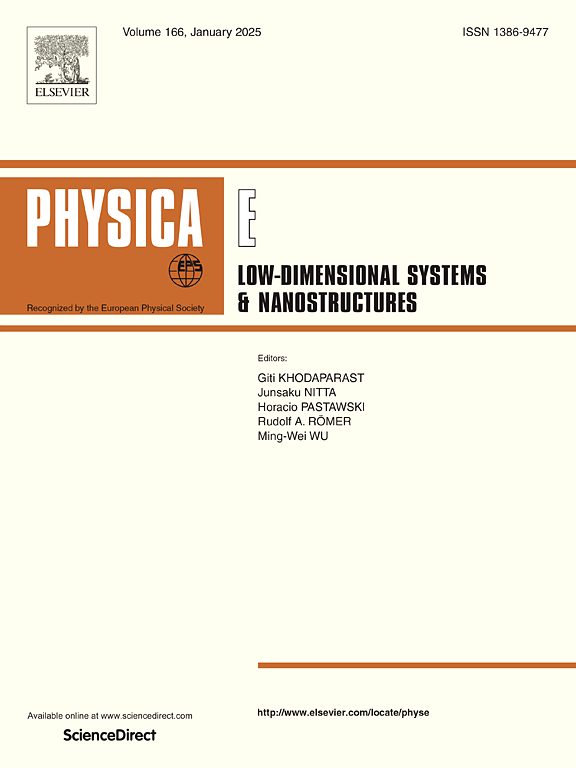Ag/Co3O4 nanocomposites from ZIF-67 MOF for enhanced low-temperature toluene gas sensing
IF 2.9
3区 物理与天体物理
Q3 NANOSCIENCE & NANOTECHNOLOGY
Physica E-low-dimensional Systems & Nanostructures
Pub Date : 2025-02-01
DOI:10.1016/j.physe.2024.116174
引用次数: 0
Abstract
Porous Co3O4 nanostructures are synthesized through thermolysis of ZIF-67 MOF, and then Ag nanoparticles are loaded into Co3O4 nanostructures to obtain Ag/Co3O4 nanocomposites. All results indicate that Ag-loading increases the specific surface area and bandgap of Ag/Co3O4 nanocomposites, as the result, the toluene gas sensing performance is also improved greatly. Among them, Ag0.126-Co3O4 sensor exhibits the highest response value of 520.60 to 100 ppm toluene gas at 150 °C, which is 21.28 times than that of Co3O4 sensor. Notably, the optimal operating temperature of Ag/Co3O4 sensors decreases from 230 °C to 150 °C due to the excellent catalytic activity of Ag nanoparticles. Moreover, Ag/Co3O4 sensors display the excellent selectivity and favorable stability to toluene gas. Ag nanoparticles lead to the formation of Schottky heterojunctions, increasing the resistance in toluene gas. Furthermore, Ag nanoparticles provide more oxygen adsorption sites, reducing the resistance in air. Based on the synergistic effect of chemical sensitization, spillover effect, high specific surface area and Schottky heterojunctions, Ag-loading can enhance the toluene gas sensing performance of Ag/Co3O4 sensors.
求助全文
约1分钟内获得全文
求助全文
来源期刊
CiteScore
7.30
自引率
6.10%
发文量
356
审稿时长
65 days
期刊介绍:
Physica E: Low-dimensional systems and nanostructures contains papers and invited review articles on the fundamental and applied aspects of physics in low-dimensional electron systems, in semiconductor heterostructures, oxide interfaces, quantum wells and superlattices, quantum wires and dots, novel quantum states of matter such as topological insulators, and Weyl semimetals.
Both theoretical and experimental contributions are invited. Topics suitable for publication in this journal include spin related phenomena, optical and transport properties, many-body effects, integer and fractional quantum Hall effects, quantum spin Hall effect, single electron effects and devices, Majorana fermions, and other novel phenomena.
Keywords:
• topological insulators/superconductors, majorana fermions, Wyel semimetals;
• quantum and neuromorphic computing/quantum information physics and devices based on low dimensional systems;
• layered superconductivity, low dimensional systems with superconducting proximity effect;
• 2D materials such as transition metal dichalcogenides;
• oxide heterostructures including ZnO, SrTiO3 etc;
• carbon nanostructures (graphene, carbon nanotubes, diamond NV center, etc.)
• quantum wells and superlattices;
• quantum Hall effect, quantum spin Hall effect, quantum anomalous Hall effect;
• optical- and phonons-related phenomena;
• magnetic-semiconductor structures;
• charge/spin-, magnon-, skyrmion-, Cooper pair- and majorana fermion- transport and tunneling;
• ultra-fast nonlinear optical phenomena;
• novel devices and applications (such as high performance sensor, solar cell, etc);
• novel growth and fabrication techniques for nanostructures

 求助内容:
求助内容: 应助结果提醒方式:
应助结果提醒方式:


